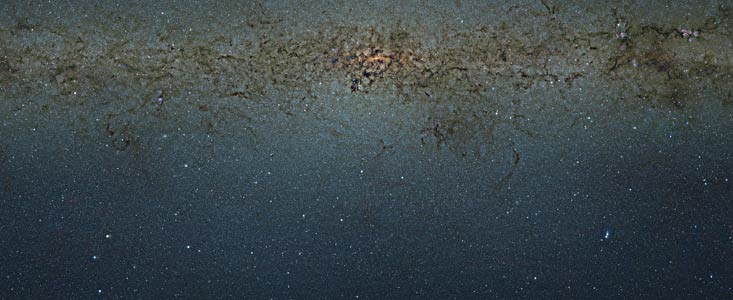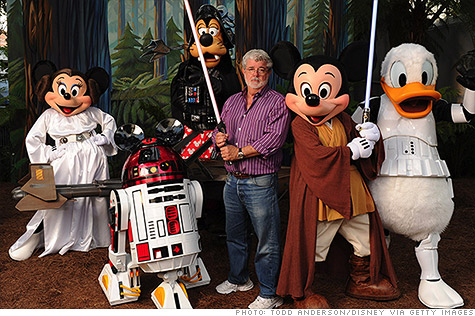Friday, December 28, 2012
Thursday, December 27, 2012
Ten Years of Blogging
Well, I let the 10th anniversary of this blog slide by as I forgot to mention it. So, as the year draws to a close maybe that's the second best time to mention it, 10 years and 102 days according to my Python computation. The first blog post to Monolith Daily (which was, indeed, my first blog post of any kind) was on 2002-09-16.
Actually I wrote about the history for the ninth anniversary.
Actually I wrote about the history for the ninth anniversary.
So Long, Gerry Anderson
Via @HNTweets
Gerry Anderson has died by Jamie Anderson.
My favorite supermarionation shows were Supercar and Fireball XL5. Of course I watched Space 1999 and UFO. I recall Thunderbirds, which seems to be so popular, but I don't remember watching it that much.
Anderson was responsible for one of my favorite sci fi space movies of the 60s, Journey to the Far Side of the Sun. The space walk scene with the music (theremin?) was quite beautiful, I always thought.
PC World's Top 10 Linux Distributions
Via @pcworld
Another year, another totally different top 10 Linux distros by Katherine Noyes.
- Linux Mint
- Mageia
- Ubuntu
- Fedora
- openSUSE
- Debian
- Arch Linux
- PCLinuxOS
- Zorin OS
- CentOS
Some Amazing Astronomical Images of 2012
Via @wired
I won't go as far as Wired's title, Best Space Photos of the Year 2012 in the article by Adam Mann, but these are amazing images.
For amazing astronomical images, one every day, see Astronomy Picture of the Day (APOD).
This image credit: ESO/B. Bailleul
Wednesday, December 26, 2012
Tuesday, December 25, 2012
Friday, December 21, 2012
Shortest Day of the Year
So is 2012-12-21 the shortest day of the year? The actual solstice occurs at different times in different years so I expect this varies. For this year, looking at the web site timeanddate.com (two d's), which I found via Google… (Sigh, the power just went out again!)
…It looks like it's actually 21 Dec, at least in Atlanta, GA. This snippet of their chart shows sun rise and set times, and the length of the day.
Happy Winter Solstice!
At 11:12 UTC, 6:12 EST, 3:12 PST.
Fri 2012-12-21 11:12:00 +0000
Fri 2012-12-21 06:12:00 -0500
Fri 2012-12-21 03:12:00 -0800
In the picture, the sun makes it lowest trek across the sky on the winter solstice. Winter officially begins.
Image credit: From NASA/NES Teachers Corner
Thursday, December 20, 2012
Friday, December 14, 2012
What Was My First Electronic Device?
On the Podcast Hypercritical on 5by5.tv John Siracusa was answering questions from listeners and one was something like, What was your first electronic device that had a big influence on you? I think the idea was to discover what maybe contributed to his interest in technology, computers, etc.
I wondered how I would answer this question myself. I was a bit taken aback by the realization that when I was really young, we practically had no electronic devices in our house. Of course we had a black and white TV. Also, by brother had built a stereo hifi system and that had a huge impact on me. It was a wonderful thing. Stereo was new, and it was rather amazing at the time. I still remember listening to one of his stereo demo records with trains and race cars zooming by.
We might have had a radio (I don't remember one from then) and that was probably it. There was nothing else in the house that would have qualified as electronic. (Hm, well my brother had his VOM meter).
But those were all tube-based devices. I don't think there was a single transistor in the house.
At some point when I was a kid I received a transistor radio followed by several others.
Of course there were battery powered toys but I don't think any of them had anything more fancy than DC motors and some incandescent lights. (LEDs were not on the market yet, at least for consumers).
The first electronic device I remember actually owning (other than the radios) was my first calculator, a Texas Instruments SR-51 (slide-rule with 51 functions). That was when I was a senior in high school. In high school physics and chemistry we used slide rules so having an electronic version with 10 digits of precision rather than three, was a wonderful thing!
Sadly the TI barely made it into my second year and was replaced with an HP-25 and then that was quickly traded for an HP-25C.
(Note: That image is an SR-51-II, a later version of my SR-51. I wasn't successful in finding an SR-51 image.)
Why is the Sky Blue?
via @HNTweets
Original by Philip Gibbs May 1997. From Physics FAQ.
Why not violet?
If shorter wavelengths are scattered most strongly, then there is a puzzle as to why the sky does not appear violet, the colour with the shortest visible wavelength.
The NoSQL Ecosystem
by Adam Marcus in The Architecture of Open Source Applications.
Unlike most of the other projects in this book, NoSQL is not a tool, but an ecosystem composed of several complimentary and competing tools. The tools branded with the NoSQL monicker provide an alternative to SQL-based relational database systems for storing data. To understand NoSQL, we have to understand the space of available tools, and see how the design of each one explores the space of data storage possibilities.
If you are considering using a NoSQL storage system, you should first understand the wide space of options that NoSQL systems span. NoSQL systems do away with many of the traditional comforts of relational database systems, and operations which were typically encapsulated behind the system boundary of a database are now left to application designers. This requires you to take on the hat of a systems architect, which requires a more in-depth understanding of how such systems are built.
Guido Van Rossum Left Google for Dropbox
From Forbes by Tomio Geron, Forbes Staff.
Dropbox Snags Google Exec And Python God Guido Van Rossum
Image credit: by Doc Searls via Wikipedia.
Wednesday, December 12, 2012
Sunday, December 02, 2012
See the Planet Mercury
Via @popastro. Society for Popular Astronomy.
Mercury reaches greatest western elongation on the 4th of December when it will rise about two hours before the Sun, shining at magnitude -0.5. Try to catch it for a few days around that date before it draws back towards the Sun again.
Venus is closing in on the Sun again too but still shining brilliantly at around magnitude -4 which makes it impossible to miss if you have a clear sky.
Saturn rises well before dawn at 4am at the start of December and nearly two hours earlier than that by the month’s end. Though much fainter than Venus, it is very bright at around magnitude 0.6. The planet’s spectacular rings are well open now making it a fine sight through a small telescope for early risers.
Image credit: Mercury, Venus and Saturn pictured on 2 December by Paul Sutherland
Taiwan engineers defeat limits of flash memory
by Nancy Owano at Phys.org. Via @physorg_com.
[Macronix] redesigned a flash memory chip to include onboard heaters to anneal small groups of memory cells. Applying a brief jolt of heat to a very restricted area within the chip (800 degrees C) returns the cell to a “good” state. They said that the process does not have to be run all that often. According to project member Hang‑Ting Lue, the annealing can be done infrequently and on one sector at a time while the device is inactive but still connected to the power source. It would not drain a cellphone battery, he added.
Macronix estimates that the flash memory cells could beat the 10,000 cycle limit by lasting for as much as for 100 million cycles
Friday, November 30, 2012
Biggest Black Hole?
Article by Elizabeth Howell for Space.com.
Via @mashable
Astronomers have discovered what may be the most massive black hole ever known in a small galaxy about 250 million light-years from Earth, scientists say.
The supermassive black hole has a mass equivalent to 17 billion suns and is located inside the galaxy NGC 1277 in the constellation Perseus. It makes up about 14 percent of its host galaxy’s mass, compared with the 0.1 percent a normal black hole would represent, scientists said.
UCLan Discovery Challenges the Cosmological Principle
From The University of Central Lancashire
Via @doccosmos
An international team led by academics from the University of Central Lancashire (UCLan) has found the largest known structure in the universe – a large quasar group that challenges scientific understanding of our universe.
The Cosmological Principle is the assumption that the universe, when viewed at a sufficiently large scale, looks the same no matter where you are observing it from.
Whole clusters of galaxies can be 2-3 Mpc across but LQGs [large quasar groups] can be 200 Mpc or more across. Although, based on the Cosmological Principle and the modern theory of cosmology, calculations suggest that astrophysicists should not be able to find a structure larger than 370 Mpc.
Neil Armstrong
This is one of my favorite pictures of Neil Armstrong standing next to my favorite rocket/plane, the X-15.
Some lawmakers are considering renaming Dryden Flight Research Center after Armstrong.
Via @PTTU.
Saturday, November 24, 2012
Can You See A Star Die?

(Image Link (to zoom))
My sister-in-law asked me this excellent question the other night. I completely forgot about SN 1987A.
SN 1987A was a supernova in the outskirts of the Tarantula Nebula in the Large Magellanic Cloud, a nearby dwarf galaxy. It occurred approximately 51.4 kiloparsecs from Earth, approximately 168,000 light-years, close enough that it was visible to the naked eye. It could be seen from the Southern Hemisphere. It was the closest observed supernova since SN 1604, which occurred in the Milky Way itself. The light from the new supernova reached Earth on February 23, 1987.
Of course I didn't see this one because it was only visible in the Southern Hemisphere but I followed it pretty closely. As noted above, it was the first close supernova since A.D. 1604.
From the light curve you can see it took several months for the phenomenon to brighten and dim.
Could you dig a hole all the way to the Earth’s mantle?
From @howstuffworks.
Article by Patrick Kiger.
…An international team of scientists who call themselves the 2012 MoHole To the Mantle project [are] counting upon international support for a $1 billion effort in which a Japanese deep-sea drilling vessel, the Chikyu, would burrow into the bottom of the Pacific Ocean to dig deeper than anyone has ever gone before. The plan is to go right through the Earth's crust, the rocky top layer of the planet, which is 18 to 37 miles (30 to 60 kilometers) thick on land, but as little as 3 miles (5-kilometers) thick at its thinnest spots on the ocean floor [source: Osman]. If the Chikyu's drill rig breaks through a transitional boundary called the Moho, it would reach the Earth's mantle, the mysterious 1,740-mile (2,900-kilometer) thick layer between the crust and the planet's hot, molten core [sources: USGS, ScienceDaily].
Image credit: Surachit
Friday, November 02, 2012
Nine Giga-pixel Image of the Milky Way
From The Verge.
Using images from the ESO's Visible and Infrared Survey Telescope for Astronomy (VISTA), researchers have stitched together a massive nine-gigapixel image of the Milky Way galaxy. The 108,200 x 81,500 image consists of nearly nine billion pixels, and was used to create a catalog of 84 million stars. Researchers claim that this is the largest image of its kind — the first to catalog the entire bulge of the Milky Way galaxy — and contains ten times more stars than any previous study.
My favorite part is where it says “Click to Enlarge.”
Wednesday, October 31, 2012
The Ultimate Original Series Star Trek Poster
In the fandom hall of fame, a special place is held by Star Trek devotees and Dusty Abel has earned himself a seat at the right hand of Spock for this incredible poster that includes an element for every episode of the original series.
Sunday, October 28, 2012
No real change in the 00z NAM
RT @spann
Hit on the NJ coast after midnight Mon night. Effects begin much earlier #sandy pic.twitter.com/IXEMPbaO
Saturday, October 27, 2012
Nice loop but scary scenario
of the NAM4 model for #Sandy. RT @wxbrad.
http://weatherbellmodels.com/weather/hires_uv900_slp_east_anim.gif
Tuesday, October 23, 2012
Fireball - Meteorite Hits House in California
From Space.com.
Homeowner Lisa Webber, …found the space rock Saturday (Oct. 20)…. She recalled hearing a sound on her roof the night the meteor was reported and went searching behind her house, where she found a 2.2 ounce (63 grams) stone.
Tuesday, August 21, 2012
D-Wave uses quantum method to solve protein folding problem
RT @physorg_com
Report by Lisa Zyga
Report by Lisa Zyga
The study, “Finding low-energy conformations of lattice protein models by quantum annealing,” is published in a recent issue of Nature’s Scientific Reports. The computer used quantum annealing to find the lowest-energy protein configuration by solving for the configuration as an optimization problem, where the optimal state was the lowest-energy state. Proteins can be folded in a large number of ways because they’re made up of many chains of amino acids. Yet somehow, proteins almost always manage to fold themselves in the correct configuration (when they don’t fold correctly, they can cause misfolded-protein diseases such as Alzheimer's, Huntington's, and Parkinson's). Scientists think that proteins fold themselves correctly because the correct configuration is also the state of lowest energy, the state at which the protein becomes stable.
Saturday, August 04, 2012
How One Person was Hacked via iCloud
Via @thatdrew
Mat Honan tells a detailed story of how someone got into his accounts.
“someone gained entry to my iCloud account, used it to remote wipe all of my devices, and get entry into other accounts too.”
Mat Honan tells a detailed story of how someone got into his accounts.
“someone gained entry to my iCloud account, used it to remote wipe all of my devices, and get entry into other accounts too.”
Sunday, July 29, 2012
Trouble with OAuth 2.0
RT @newsycombinator
Eran Hammer writes about resigning from the OAuth working group as the lead author and editor of the standard.
Tuesday, July 24, 2012
Monday, July 16, 2012
Ubuntu Releases, Versions, and Names
I suppose it's time to post an update on the current Ubuntu zoo. Apparently it was 2008 when I last did this.
http://releases.ubuntu.com/
- 8.04.4 LTS (Hardy Heron)
- 8.10 (Intrepid Ibex)
- 9.04 (Jaunty Jackalope)
- 9.10 (Karmic Koala)
- 10.04.4 LTS (Lucid Lynx)
- 10.10 (Maverick Meerkat)
- 11.04 (Natty Narwhal)
- 11.10 (Oneiric Ocelot)
- 12.04 LTS (Precise Pangolin)
Previous Post
Sunday, July 15, 2012
Google Colossus File System
via Wired.
But Google no longer uses GFS. Two years ago, the company moved its search to a new software foundation based on a revamped file system known as Colossus, and Urs Hölzle — the man who oversees Google’s worldwide network of data centers — tells Wired that Colossus now underpins virtually all of Google’s web services, from Gmail, Google Docs, and YouTube to the Google Cloud Storage service the company offers to third-party developers.
Gigaom's Four Part Series on North Carolina Data Centers
RT @gigaom
Article by Katie Fehrenbacher.
Article by Katie Fehrenbacher.
Apple, Google, Facebook and other Internet giants have chosen a several hundred-mile stretch of land north of Charlotte, North Carolina to build their mega east coast data centers. These are some of the largest data centers in the world for some of the most powerful Internet and tech companies on the planet. Why here? Will this continue in the future? And what’s been the affect on the local communities? Check out the 4-part series I published this week on North Carolina’s mega data center cluster, the resources that go into these things, and why one, in particular, is betting on clean power.
Yahoo Passwords Leak
I've found it really difficult to find good, responsible news reports on this event. I'm sure Steve Gibson (grc.com) will report on it on this week's upcoming Security Now.
Here's a pretty good article on this event at Cnet.
In this case, you're password would only have been compromised if you'd logged into the Yahoo Contributor Network, apparently also known as Yahoo Voices, and previous to Yahoo, Associated Content which Yahoo acquired.
Here's the main, important advice which has been true for a long time, maybe always. Please don't use the same password for more than one site. I like the recommendation to use LastPass at lastpass.com. It gives you a secure way to keep up with and use your passwords.
The only reason you need to change your password on other sites than Yahoo is if you (ever) used the same passwords on them.
Here's a pretty good article on this event at Cnet.
In this case, you're password would only have been compromised if you'd logged into the Yahoo Contributor Network, apparently also known as Yahoo Voices, and previous to Yahoo, Associated Content which Yahoo acquired.
Here's the main, important advice which has been true for a long time, maybe always. Please don't use the same password for more than one site. I like the recommendation to use LastPass at lastpass.com. It gives you a secure way to keep up with and use your passwords.
The only reason you need to change your password on other sites than Yahoo is if you (ever) used the same passwords on them.
Pournelle Quote
From Jerry Pournelle's new site (via pournelle.com)
“I have always been a generalist meaning I know less and less about more and more until eventually at the limit I know nothing at all about everything.”
“I have always been a generalist meaning I know less and less about more and more until eventually at the limit I know nothing at all about everything.”
Tuesday, July 10, 2012
Beyond The Rule of Thirds: Advanced Composition With David Brommer
In this B&H Event Space seminar, David Brommer takes you “Beyond The Rule of Thirds” by discussing many different aspects of photographic composition. The entire seminar will take about two hours to watch from start to finish, but the information Brommer covers — from positive and negative space,...
via Flipboard
via Flipboard
10 reasons Apple, Facebook & Google chose North Carolina for their mega data centers
RT @gigaom by Katie Fehrenbacher
Facebook isn’t the only Internet giant that chose the so-called North Carolina data center corridor as home for one of its most important server farms. Within a couple-hundred-mile radius, Google and Apple have also built mega data centers, as have Wipro, Disney, AT&T and others.
Image credit: kubais/pond5.com
Seesmic
FlipBoard is beautiful. I've been using it since about the first day it became available on Android for general users. Maybe three weeks?
However, in the past couple of days I've gone back to reading Twitter, meaning news in general, on Seesmic on my phone. It's just faster to read down through the tweets without having to flip over the images.
Again, the experience of using FlipBoard, the fonts and the look are a joy to use. I'll probably use FlipBoard when I want to be entertained a bit more by my news reading experience than simply getting the information.
I do have one complaint. Some web sites rendered on FlipBoard are a little hard to use. I find myself fighting with the (already annoying) Android pinch-zoom-scroll feature to get the text zoomed and placed in the FlipBoard version. I finally adopted the practice of just tapping the drop down and selecting View On Web to go to Chrome. Note this is on web sites that FlipBoard renders in their usual web view and not in a FlipBoard-optimized version. I think.
Why is Clojure so slow?
RT @newsycombinator
From Martin's Computer Programming Blog.
What we can see it that Java itself accounts for 0.35s of the startup time, but unfortunately Clojure adds another second(!) on top of that. This 1.3s pause before main gets called is why Clojure is unsuitable for "terminal scripts". The running time of any scripts (like lein or starting the REPL) will be totally dominated by the startup time. Most Clojure developers will not notice this too much to, since they spend almost all their time in the REPL itself, but users of those Clojure programs will!
My summary is that it spends 95% of the startup-time loading the clojure.core namespace (the clojure.lang.RT class in particular) and filling out all the metadata/docstrings etc for the methods. This process stresses the GC quite a bit, some 130k objects are allocated and 90k free-d during multiple invokes of the GC (3-6 times), the building up of meta data is one big source of this massive object churn.
Tuesday, July 03, 2012
Amazing Star Trails
RT @matthiasrascher
Star trails over the Australian Outback by photographer Lincoln Harrison. http://t.co/4xqLJQun #photography #space
Why Did Borland Fail?
I loved Turbo Pascal. Here's one person's explanation of what happened at Borland.
via Flipboard on Android.
Leap Second Problems
RT @arstechnica
“Almost exactly 24 hours ago, the Internet faced the most recent one. It didn't go so well. Headlines have varied—calling the incident "Y2K 2.0," declaring that the "Internet died," or simply saying it, "Gave the Internet a Really Bad Headache." Hyperbolic? Sure, but the following sites did confirm leap second-related outages…”
“Almost exactly 24 hours ago, the Internet faced the most recent one. It didn't go so well. Headlines have varied—calling the incident "Y2K 2.0," declaring that the "Internet died," or simply saying it, "Gave the Internet a Really Bad Headache." Hyperbolic? Sure, but the following sites did confirm leap second-related outages…”
Google and the Leap Second
Soon after the advent of ticking clocks, scientists observed that the time told by them (and now, much more accurate clocks), and the time told by the Earth's position were rarely exactly the same. It turns out that being on a revolving imperfect sphere floating in space, being reshaped by earthquakes and volcanic eruptions, and being dragged around by gravitational forces makes your rotation somewhat irregular. Who knew?
These fluctuations in Earth’s rotational speed mean that even very accurate clocks, like the atomic clocks used by global timekeeping services, occasionally have to be adjusted slightly to bring them in line with “solar time.” There have been 24 such adjustments, called “leap seconds,” since they were introduced in 1972. Their effect on technology has become more and more profound as people come to rely on fast, accurate and reliable technology.
Image credit: gunnar3000/Pond5.com
Caffeine How-To
RT @lifehacker
Caffeine can be tasty, but how can you use it to boost your brain? Easy question for a neuroscientist.
Image: from Life Hacker
Tuesday, June 26, 2012
Giant Hot Wheels Track
RT @wiredplaybook.
with double loop-the-loop AND life-size cars! Warning: This is a preview, the event is supposed to happen 30 June.
Image credit: Artist rendering from Mattel
Re-Tweeting Part 2
Whew! Okay, that Twisted Light post just now took forever to do! That's complex. I don't know if I'll keep this up.
'Twisted light' carries 2.5 terabits of data per second
RT @LanceUlanoff
From BBC News.
Researchers have clocked light beams made of “twisted” waves carrying 2.5 terabits of data - the capacity of more than 66 DVDs - per second.
The technique relies on manipulating what is known as the orbital angular momentum of the waves.
Recent work suggests that the trick could vastly boost the data-carrying capacity in wi-fi and optical fibres.
Image credit: Nature Photonics
Re-Tweeting
In the past I would have said to just look at my re-tweets to gather a recommended list. However, most recently I've taken to writing blog posts here instead of re-tweeting most of the time, though I'll still re-tweet short items of interest. When I post, I usually just link back to the original article so there's not any mention of who I got the article link from on Twitter.
I'm going to experiment with ways to acknowledge the original tweets and Twitter account, starting with a classic RT at the beginning of the post. However, if that's just too repulsive to look at on an otherwise nice looking blog post, the next idea will be some other Twitter acknowledgement, maybe at the bottom.
The nice thing about an RT is that it will show up in the Twitter feed that's reduced from my blog in the traditional way. We'll see how this goes.
Saturday, June 23, 2012
Why we owe it all to Alan Turing
by Dan Crow on Gigaom.
…he, more than anyone, can be said to be the father of the computer. So what was his great insight? What is it he did that shaped our world so profoundly?
The Church-Turing Thesis has two very important implications.
First, it recognized the fundamental limitations of the system — for example, that there are some programs that are not computable by any machine.
But it was the second implication that was most profound: within its limitations, a Turing Machine can be programmed to run any piece of software. In fact, one of the programs that can be run on a Turing Machine is a simulation of a Turing Machine. And the simulated Turing Machine can itself run any program that a Turing Machine can run.
This is the genius of Turing’s work, his key insight. He has defined a “Universal Machine” — one that can run simulations so powerful they are themselves universal machines.
Are Bitcoins Becoming Europe's New Safe Haven Currency?
from Daily Finance.
“Bitcoin is in some senses a financial island removed from the vicissitudes and consequences of a traditional banking system. It's neither controlled by central banks nor governments, and thus not vulnerable to larger-scale shifts like changing interest rates or the rampant inflation of countries in decline.”
“Bitcoin is in some senses a financial island removed from the vicissitudes and consequences of a traditional banking system. It's neither controlled by central banks nor governments, and thus not vulnerable to larger-scale shifts like changing interest rates or the rampant inflation of countries in decline.”
Saturday, June 16, 2012
A Bit More on Bradbury
One of my favorite writers, Jerry Pournelle, wrote on his blog, “At one time the whole genre was dominated by ‘ABC’, Asimov, Bradbury, and Clarke, although usually someone would quickly add Robert Heinlein. Now the Big Four are gone. They will all be missed.”
Verified by Visa?
I was submitting an order on-line for refurbished electronics from a site I normally don't use. A window popped up for Verified by Visa asking for the CVV code again, also the last four digits of my social security number and asking me to create a password. It has our bank's logo on it.
Of course I was suspicious. I poked around the web and found the actual Visa site as well as this article which pretty much explains what happened to me along with the program.
I also went to my bank's web site and found a discussion of the program there.
The bottom line: This is a good thing. It essentially adds a password to your credit card. You have to supply this password when you use your card on-line.
I would have appreciated more warning but maybe there was something from the bank that I ignored.
Of course I was suspicious. I poked around the web and found the actual Visa site as well as this article which pretty much explains what happened to me along with the program.
I also went to my bank's web site and found a discussion of the program there.
The bottom line: This is a good thing. It essentially adds a password to your credit card. You have to supply this password when you use your card on-line.
I would have appreciated more warning but maybe there was something from the bank that I ignored.
Friday, June 08, 2012
Weatherbrains!
After James Spann appeared on this week's TWiG, I was delighted to have learned about Weatherbrains, “The official netcast for people who love weather.” I'm subscribing to the audio podcast and the quality is quite good. Recommended!
Note: Here's the RSS link for subscribing to the podcast, which I only found by a Google search.
James Spann
Images credit: From weatherbrains.com
Thursday, June 07, 2012
So Long Ray Bradbury
I enjoyed many of his short stories, particularly in high school. This is a very nice video of him at JPL on the eve of Mariner 9 entering Mars orbit in 1971. He's sitting next to Arthur C. Clarke. There's a quick shot of Carl Sagan, too, who was on stage. Good grief, Bradbury was younger than me there.
My Favorite Venus Transit Video
It's pretty clear that NASA's Solar Dynamics Observatory (SDO) has stolen the show, at least on Youtube and Twitter, with it's videos of the recent Venus transit. However, my favorite video is not the popular, creepy (yet beautiful!) extreme ultraviolet images of a flat-looking black circle moving across amazing prominences and other features in the hot solar corona.
My favorite is this video in orange light where you can clearly see sunlight scattered around Venus' atmosphere as it moves in front of the Sun. The limb of the Sun also seems to be refracted by the planet's atmosphere.
These images were made by the SDO's Heliocentric and Magnetic Imager (HMI) which observes at a wavelength of an Fe I (unionized iron) absorption line at λ6173.
Tuesday, June 05, 2012
Live Stream of Venus Transit
There are several live streams of the Venus transit. Here's one from Mt. Wilson.
http://sunearthday.nasa.gov/webcasts/mtwilson/
http://sunearthday.nasa.gov/webcasts/mtwilson/
Friday, June 01, 2012
Melancholia Misses the Physics
Melancholia was a dark and slightly depressing movie but with some interesting special effects. I watched it on a recommendation from Hal. However, they got the science wrong on a couple of basic accounts and I think I know why.
If a terrestrial planet (dirt and rock) came that close to the Earth, there would be two major effects. First, the tidal force on the Earth would be extreme. The Moon's diameter is more like the size of the United States and look at it's tidal force. Such an approaching big planet as the fictional Melancholia would basically put the Earth's surface through a food processor before any collision ever occurred. I'm not sure if the tidal force would be enough to completely destroy the Earth, but anything and anyone on or near the Earth wouldn't know the difference.
Tidal force is caused by the difference in gravitational force between the closest and farthest parts of one body caused by another. This effect of the Moon on the Earth causes it's ocean surface to bulge toward and away from the Moon. The Earth's crust also does the same but to a lesser and non-catastrophic extent.
Second, the two bodies would move about their mutual center of gravity. The Earth would be perturbed completely out of it's orbit by the encounter in some crazy way. It could still involve a single close encounter, again with both planets being destructively disturbed by the tidal forces of each on the other, followed by a later, final impact, but there's no telling what their mutual trajectory would look like. What is nearly certain is that the Earth would not continue on it's nearly-circular orbital path.
So surely they had a science/astronomical advisor for the movie. Why such fundamental mistakes? I propose that when they consulted their expert, they were thinking of a small asteroid collision with a body more the size of a large metropolis or a state. A small body wouldn't perturb the Earth from it's orbit and wouldn't have much tidal effect. However, the impact would be catastrophic.
Later, because they had brilliant ideas about the look and effect of a giant planet approach and final impact, they changed the threatening body but they didn't go back and consult the expert. They just kept the path from the previous discussions.
Subscribe to:
Posts (Atom)







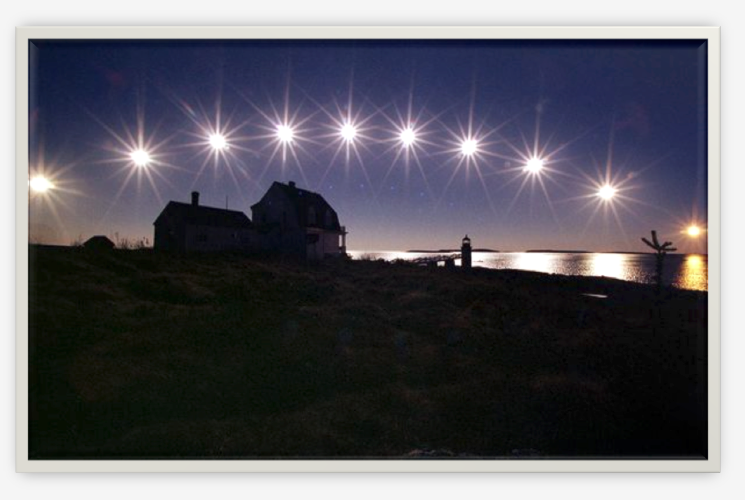

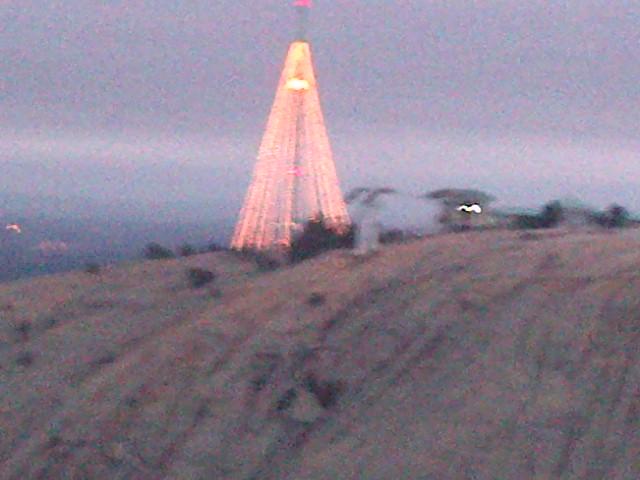
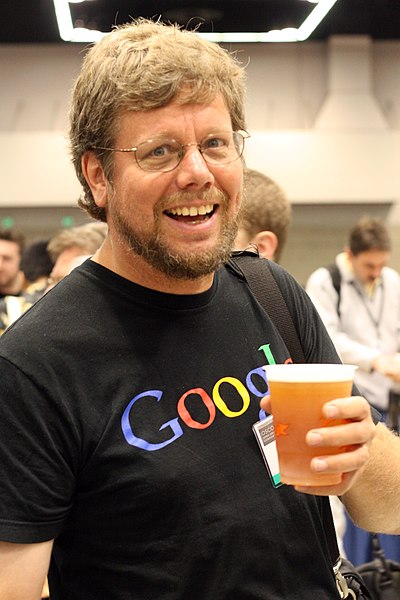





.jpg)


